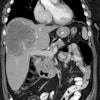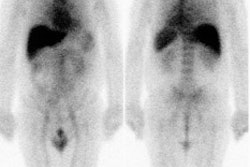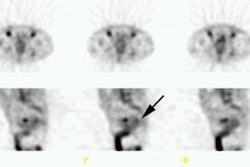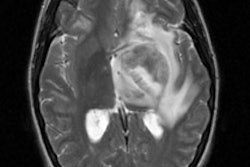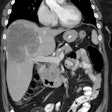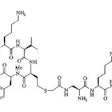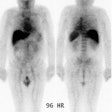Radiol Clin North Am 1997 Mar;35(2):457-85
Colorectal cancer. Radiologic staging.
Thoeni RF.
The role of conventional CT scan and conventional MR imaging in assessing patients with
colorectal tumors is now well established. Because both techniques have an unacceptably
low accuracy for identifying the early stages of primary colorectal cancers (T1, T2N0 or
N1 and early T3N0 or N1, or Dukes stage A, B1 and 2, and C1), their routine use for
preoperative staging is not recommended. This low staging accuracy is related to the fact
that neither method can assess the depth of tumor infiltration within the bowel wall and
both have difficulty in diagnosing malignant adenopathy. These distinctions are necessary
in order to determine correctly patient prognosis and tumor resectability. If the various
publications on CT scan and MR imaging staging of primary colon tumors are summarized, a
mean overall accuracy of approximately 70% can be established. The sensitivity for lymph
node detection of malignant lymphadenopathy is only about 45%. The sensitivity for
detection of positive lymph nodes is better for rectal tumors because any adenopathy in
the perirectal area can be considered malignant because benign adenopathy is not seen in
this area. For the early stages of colon cancer or recurrent tumor at the anastomotic
site, endoscopic ultrasound or TRUS is the method of choice. Both TRUS and MR imaging with
endorectal coils can demonstrate the various layers of the rectal wall, but the
ultrasonographic examination can be performed at lower cost and is less time-consuming.
Despite these limitations CT scan and MR imaging are useful for assessing patients
suspected of having extensive disease, including invasion of fat or neighboring organs or
metastatic spread to distant sites including, liver, adrenals, lung, and so forth. CT scan
and MR imaging are also helpful in the following ways: in determining whether a patient
will benefit from preoperative radiation or whether a patient with rectal cancer can
undergo a sphincter-saving procedure; for designing radiation ports; and for detecting
complications related to the neoplasm, such as perforation with abscess formation or
preobstructive ischemia in patients with complete obstruction by tumor. In these cases,
management often is based on CT scan and MR imaging findings and cross-sectional follow-up
studies can establish the success of treatment. CT scan and MR imaging have a premier role
in the detection of recurrent colorectal cancer. CT scan and MR imaging are superior to
colonoscopy for diagnosing extrinsic mass-like tumor recurrences and they are the only
methods by which patients with total AP resection can be fully evaluated. The overall
accuracy of CT scan and MR imaging for detecting recurrent colorectal tumors ranges from
90% to 95%. Following AP resection, CT scan cannot reliably determine whether a soft
tissue density in the surgical bed represents recurrent tumor, and it is important to
obtain CT scan baseline studies 4 months after surgery and to repeat this examination at
6-month intervals. Scar tissue, even if initially masslike, shrinks over time and after 1
year should be smaller and its margins more sharply defined. Any apparent increase in size
of a mass or any demonstration of adenopathy must be considered an indication for biopsy.
Recurrent tumors that do not extend to the pelvis or abdominal sidewalls or invade bone or
nerves can be resected. Subtle tumor recurrence or tumor foci in small nodes can be
detected by PET scan and immunoscintigraphy, but their future role in the diagnostic
imaging of colorectal cancer patients depends on the results of ongoing studies. Helical
CT scan has the advantages of fast volume scanning associated with optimal bolus delivery,
absence of artifacts related to motion, absence of missed slices, and availability of
reformations in multiple planes and three-dimensional reconstruction (virtual reality).
The role of this technique in patients with colorectal neoplasms has not been defined.
(ABSTRACT TRUNCATED)
Publication Types:
- Review

